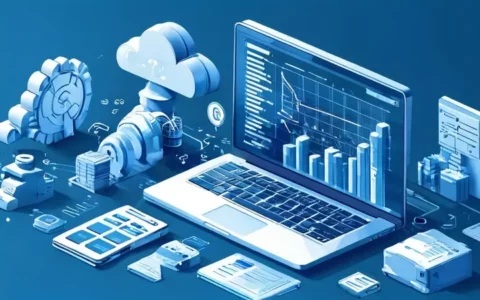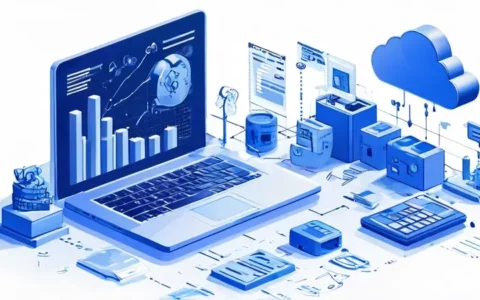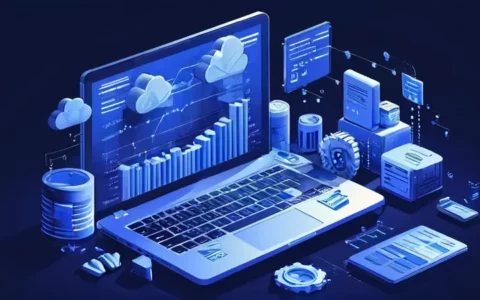
ABSTRACT
Programming, commonly known in English as "coding," is a process where someone writes instructions that a computer can understand and execute. Of these, a key aspect to delve into is how programming serves as a bridge between human logical reasoning and computer execution. This involves translating complex problems into an algorithmic language that machines can interpret, thereby transforming ideas into applications or systems operative on digital platforms. This interaction between logical constructs and computational execution forms the crux of modern technology, driving innovations and solutions across various sectors.
I. INTRODUCTION TO PROGRAMMING
Programming, or the art of coding, stands as the cornerstone of the digital realm. It enables individuals to communicate instructions to computers in a language comprehensible to machines. This foundational process underpins software development, website creation, and the operation of a myriad of applications facilitating everyday life.
II. THE LANGUAGE OF COMPUTERS
At the heart of programming is the utilization of specific programming languages. These languages, such as Python, Java, and C++, serve as mediums through which programmers articulate instructions. Each has its syntax and applications, ranging from web development to machine learning and beyond, highlighting the versatility and breadth of programming.
III. THE PROCESS OF DEVELOPING SOFTWARE
Software development is a disciplined process. It starts with conceptualization, moves through design and coding, onto testing, and finally to deployment and maintenance. This cycle ensures that the final product meets user requirements and functions efficiently across platforms, showcasing the intricate relationship between thoughtful design and technical execution.
IV. APPLICATIONS OF PROGRAMMING
The applications of programming are as diverse as they are impactful. From powering search engines to enabling smart home devices, coding is the invisible force driving innovation. It has a pivotal role in data analysis, AI development, and the creation of interactive web experiences, underscoring its integral position in both everyday conveniences and groundbreaking technological advances.
V. THE FUTURE OF CODING
As we venture further into the digital age, the role of programming only becomes more pronounced. With advancements in AI and machine learning, coding is evolving, requiring a deeper understanding of complex algorithms and data structures. This evolution promises to expand the horizon of what's possible with technology, paving the way for more intelligent, efficient, and intuitive systems.
VI. CHALLENGES AND OPPORTUNITIES
Programming, while a gateway to innovation, also presents its set of challenges. Security concerns, the need for continuous learning amid rapidly evolving technologies, and the quest for more efficient code are ever-present. However, these challenges also present opportunities for growth, driving programmers to develop more secure, robust, and efficient solutions.
In conclusion, programming—or coding—stands as the critical interface between human creativity and computer capability. Its significance spans across industries, fueling advancements that continue to reshape our world. As it evolves, with challenges turning into opportunities for enhancement, its role in steering the future of technology remains undiminished.
相关问答FAQs:
Q: What is the English word for "编程" (programming)?
A: The English word for "编程" is "programming". Programming refers to the process of creating and designing instructions that a computer can execute to perform specific tasks. It involves writing and testing code in various programming languages to create software, websites, applications, and other technology solutions.
Q: What are the key concepts of programming?
A: Programming encompasses various key concepts, including:
-
Algorithm: An algorithm is a step-by-step procedure or formula used to solve a problem or perform a task.
-
Data Types: Different types of data that can be manipulated by a computer program, such as integers, floating-point numbers, strings, and booleans.
-
Variables: Variables are used to store and manipulate data within a program. They can hold different values during program execution.
-
Conditional Statements: Conditional statements allow the program to make decisions based on certain conditions. The most common conditional statements include if-else statements and switch statements.
-
Loops: Loops enable repetitive execution of a block of code. Common loop structures include for loops, while loops, and do-while loops.
-
Functions: Functions are blocks of reusable code that perform a specific task. They help in organizing and modularizing the code.
-
Object-Oriented Programming: Object-oriented programming (OOP) is a programming paradigm that focuses on organizing code into classes, objects, and their interactions.
Q: What are the popular programming languages?
A: There are numerous programming languages available, each with its own specific purpose and popularity. Some of the popular programming languages include:
-
Python: Python is known for its simplicity, readability, and versatility. It is widely used in web development, data analysis, artificial intelligence, and scientific computing.
-
Java: Java is a general-purpose programming language that is widely used for developing enterprise-level applications, Android apps, and server-side applications.
-
JavaScript: JavaScript is a web-based programming language used for front-end and back-end web development. It enables interactive websites and web applications.
-
C++: C++ is a powerful programming language often used for system-level programming, game development, and resource-intensive applications.
-
Ruby: Ruby is an elegant and beginner-friendly language often used for web development and scripting. It emphasizes simplicity and productivity.
-
Swift: Swift is a programming language developed by Apple for building iOS, macOS, watchOS, and tvOS applications. It is known for its safety and performance.
These are just a few examples, and there are many more programming languages available, each with its strengths and areas of application.
文章标题:编程是什么英文,发布者:不及物动词,转载请注明出处:https://worktile.com/kb/p/1783447

 微信扫一扫
微信扫一扫  支付宝扫一扫
支付宝扫一扫 




